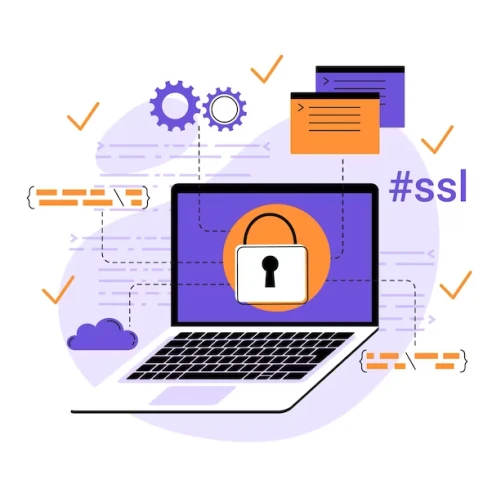What is Linux Pentesting? How Can It Improve Network Security?

When setting up and testing network security websites or systems, it is critical to ensure they work correctly and do not have cybersecurity vulnerabilities that malicious hackers could exploit. The best way to improve and guarantee data and network security while preventing attacks is by continuously testing the system for potential flaws. Pentesting is an incredibly helpful tool that can be utilized to protect your company. This article will introduce Linux pentesting and its benefits, explain the basic methodology, and explore some excellent network security toolkits available to Linux users.
What Is Pentesting? How Are Tests Executed?
Pentesting, or ethical hacking, is the practice of carrying out staged attacks in network security that mimic actual security incidents. This helps identify weak points malicious hackers could identify as exploits in cybersecurity, which can be utilized to attack. Pentests can vary greatly depending on the threat launched, the information the ethical hacker can obtain beforehand, and the limitations put in place by an employer. The majority of pentests fall into one or multiple of the following categories:
- Insider pentests simulate an insider attack, where a malicious hacker poses as a legitimate employee to gain access to the company’s internal network. This type of pentest relies on finding internal network security issues, such as
 access privilege and network monitoring flaws, rather than external cybersecurity vulnerabilities, like firewall, antivirus, and endpoint protection problems.
access privilege and network monitoring flaws, rather than external cybersecurity vulnerabilities, like firewall, antivirus, and endpoint protection problems. - Outsider pentests don’t give hackers access to the company’s internal network or employees, forcing them to get in through external means, such as public websites or open communication ports. This type of pentest can overlap with social engineering pentests, in which a hacker evades external protection by tricking an employee into granting them access to the company’s internal network.
- Data-driven pentests provide the hacker with security information about the target to simulate an attack by a former employee or someone who obtained leaked security data.
- Blind pentests give the hacker no information about the target other than their name and publicly available information. This leaves the employee entirely on their own in figuring out how to find the holes in network security websites and systems that have been implemented.
- Double-blind pentests test security and IT staff along with digital security measures. No one in the company is aware of the simulated attack, forcing them to react as they would if they encountered a truly malicious cloud security breach. Double-blind pentests provide valuable information regarding how to improve the security posture for an entire company, such as staff readiness.
Pentesting Methodology
 Just like malicious cyberattacks, pentests require careful planning to be successful. They follow a sequence of clearly defined steps to yield the data and insights sought by the pentester. Let’s examine the basic pentesting methodology:
Just like malicious cyberattacks, pentests require careful planning to be successful. They follow a sequence of clearly defined steps to yield the data and insights sought by the pentester. Let’s examine the basic pentesting methodology:
- Gather Information & Plan: The ethical hacker gathers information on the target and plans the point of attack around it.
- Vulnerability Evaluation: They scan the point of attack, looking for cybersecurity vulnerabilities to exploit and running multiple small-scale tests to see how the system reacts.
- Vulnerability Exploitation: After finding the right entry point(s), the hacker tries to penetrate the target’s security system and access the network, taking advantage of exploits in cybersecurity.
- Maintaining Covert Access: If the hacker can evade security defenses and access the network, they can attempt to stay inside the network undetected long enough to achieve the specified goal of the pentest (leaking data, compromising systems and/or files, installing malware, etc.), putting network security websites to the test.
- Reporting, Analyzing, & Repairing: Whether the attack was successful or not, the hacker reports the findings to the employer. Security professionals then analyze the attack data, compare it to what their monitoring systems report, and implement proper modifications to improve security posture and defenses.
- “Rinse & Repeat”: Companies will often test the improvements they make to their security system by staging another pentest.
How Can Linux Pentesting Be Used to Improve Security Posture & Verify Network Security Safety?
As you can see, pentesting is an important component of strategies to implement a successful network security toolkit. Linux pentesting identifies weak points (or a lack thereof) in a company’s system, providing professionals with valuable data. This allows administrators to implement proper modifications to a system to improve security posture and address cybersecurity vulnerabilities before malicious hackers exploit them. Pentesting is also an excellent method of testing security changes, verifying that their systems can prevent malicious attacks on network security.
Network Security Toolkits to Use for Linux Pentesting
Kali Linux
Kali Linux is one of the most popular Linux distros among pentesters and security researchers, as it is flexible, customizable, and full-featured. It also protects sensitive data with LUKS full-disk encryption. You can download Kali Linux here.
Parrot Security OS
Parrot Security OS is a free Linux-based OS designed for pentesting, reverse engineering, and digital forensics. It is lightweight, user-friendly, and supportive of a wide selection of open-source pentesting and software development tools and utilities. Parrot Security OS is known for the impressive security and control it provides users. It is frequently updated and offers various hardening and privacy sandboxing options. You can download Parrot Security OS here.
Nmap
Nmap (“Network Mapper”) is an Open-Source Intelligence (OSINT) network monitoring tool that collects and analyzes data about a device’s hosts and servers. The widespread utility is flexible, powerful, and user-friendly, earning it numerous awards, including "Information Security Product of the Year" by Linux Journal, Info World, and Codetalker Digest. You can download Nmap here.
WebShag
WebShag is an OSINT system auditing tool that scans HTTPS and HTTP protocols, collecting relative data. It is used by ethical hackers performing outsider pentests through public websites.
Final Thoughts on Linux Pentesting to Improve Security Posture
 Pentesting, or staging cyberattacks that mimic legitimate security incidents, can help improve company security by allowing administrators to identify and enhance cybersecurity vulnerabilities within network security websites and systems. This verifies that the modifications a business does work as they should to prevent future attacks on network security. There are many excellent network security toolkits designed to assist in the pentesting process provided by Linux users. Pentesting requires careful planning and methodology and should be a main element of a comprehensive, defense-in-depth approach to network security. Are you using pentesting to help assess, improve, and verify the security of your network? We want to hear about your experience! Connect with us on social media: Twitter | Facebook
Pentesting, or staging cyberattacks that mimic legitimate security incidents, can help improve company security by allowing administrators to identify and enhance cybersecurity vulnerabilities within network security websites and systems. This verifies that the modifications a business does work as they should to prevent future attacks on network security. There are many excellent network security toolkits designed to assist in the pentesting process provided by Linux users. Pentesting requires careful planning and methodology and should be a main element of a comprehensive, defense-in-depth approach to network security. Are you using pentesting to help assess, improve, and verify the security of your network? We want to hear about your experience! Connect with us on social media: Twitter | Facebook




















